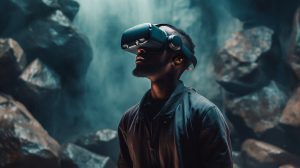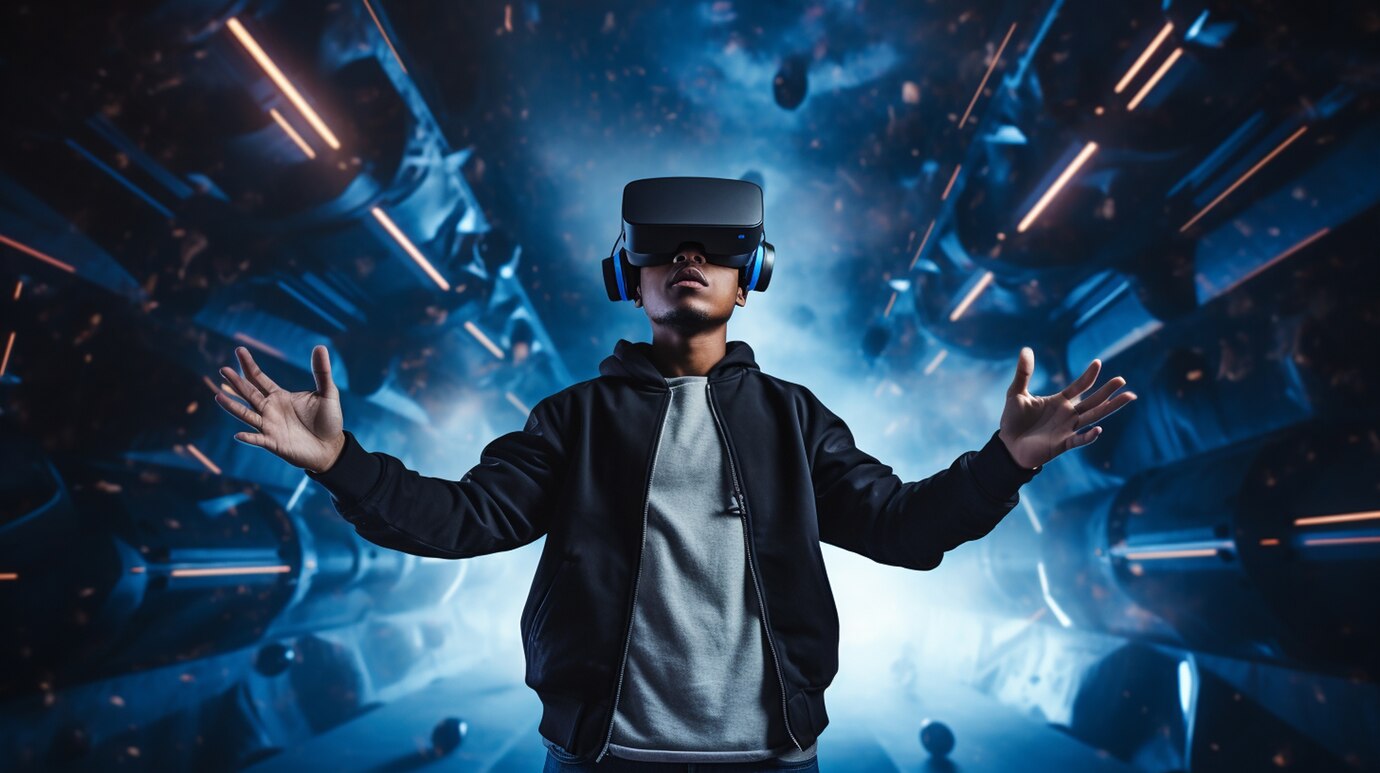Introduction
Virtual Reality (VR) has been a game-changer in various industries, from gaming to healthcare. However, one of the most fascinating applications of VR technology is in the realm of cinematic experiences. VR is not just an extension of traditional film; it is a transformative medium that offers new ways to tell stories, engage audiences, and create immersive environments. This article delves into how VR is influencing the future of cinematic experiences, focusing on its potential, current applications, and what lies ahead.
The Evolution of Cinematic Experiences

-
From Silent Films to 3D
The journey of cinematic experiences has been marked by constant innovation. From the silent films of the early 20th century to the advent of sound and color, and more recently, the introduction of 3D and IMAX, each technological leap has aimed to make the viewer’s experience more immersive and engaging. However, these advancements, while significant, still operate within the confines of a screen. VR, on the other hand, breaks these boundaries, offering a 360-degree experience that places the viewer inside the story.
-
The Birth of VR Cinematic Experiences
The concept of VR has been around for decades, but it is only in recent years that the technology has matured enough to offer viable cinematic experiences. Early experiments in VR cinema were often rudimentary, but they laid the groundwork for more sophisticated applications. Today, VR headsets like the Oculus Rift, HTC Vive, and PlayStation VR have made high-quality VR experiences accessible to the masses, paving the way for a new era in filmmaking.
The Role of Sound in VR Films
Sound design plays an even more crucial role in VR films than in traditional cinema. In a 360-degree environment, sound must be carefully crafted to guide the viewer’s attention and create a fully immersive experience. This adds a new layer of complexity for filmmakers but also opens up possibilities for deeper engagement. Surround sound, spatial audio, and other innovative techniques help to create an atmosphere that feels lifelike and convincing.
Short Films and VR
While full-length VR feature films are still rare, short films have become a popular format for VR experiences. Due to the complexity and cost of VR production, many filmmakers opt for shorter formats that can still offer a complete, immersive experience. This has given rise to a wave of experimental short films that explore the potential of VR, allowing filmmakers to test new narrative techniques without the constraints of longer projects.
How VR is Transforming Storytelling

-
Immersive Environments
One of the most compelling aspects of VR cinematic experiences is the ability to create fully immersive environments. Unlike traditional films, where the viewer’s perspective is limited to what the camera shows, VR allows for a 360-degree field of view. This means that viewers can look around and explore the environment, making the experience far more engaging and interactive.
-
Interactive Storytelling
In traditional films, storytelling is a one-way street; the audience watches passively as the story unfolds. VR changes this dynamic by introducing elements of interactivity. Viewers can make choices that influence the narrative, creating a more personalized experience. This opens up new possibilities for storytelling, allowing filmmakers to craft multiple storylines and endings based on viewer decisions.
-
Emotional Engagement
The immersive nature of VR can also lead to greater emotional engagement. Being inside the story makes the experience more personal and impactful. For example, a VR film about a refugee crisis can make viewers feel as though they are walking through a war-torn village, creating a sense of empathy that is hard to achieve with traditional film.
Expanding Audience Interaction
Virtual Reality offers filmmakers a unique opportunity to break the fourth wall in ways that traditional cinema cannot. Instead of simply watching the story unfold, audiences can now interact with the environment and characters. This level of interaction provides a new depth to storytelling, where every choice the viewer makes influences their experience. As VR technology improves, this could lead to films becoming more personalized, where no two viewers will experience the same story in the same way.
VR in Film Festivals
Film festivals have begun to embrace VR by showcasing short VR films and interactive projects. This inclusion highlights the growing recognition of VR as a legitimate form of cinematic art. As more filmmakers experiment with VR, film festivals are becoming spaces for testing new ideas and pushing the boundaries of what cinema can be. It’s a step toward bringing immersive films into the mainstream, providing both audiences and filmmakers with fresh and exciting ways to engage with storytelling.
Current Applications and Innovations

-
VR Short Films and Documentaries
Many filmmakers are already experimenting with VR short films and documentaries. Projects like “Clouds Over Sidra,” a VR documentary about a Syrian refugee camp, and “The Displaced,” which follows three children displaced by war, have garnered critical acclaim for their innovative use of VR to tell compelling stories.
-
VR in Feature Films
While VR feature films are still in their infancy, there are already notable examples. “The Invisible Hours,” a VR murder mystery, allows viewers to explore a mansion and follow different characters to piece together the story. This level of interactivity and freedom is unprecedented in traditional cinema.
-
VR Theaters and Festivals
As VR cinematic experiences gain popularity, dedicated VR theaters and film festivals are emerging. These venues offer a communal viewing experience, where audiences can watch VR films together while still enjoying the immersive nature of the medium. Festivals like the Venice Film Festival have even introduced VR categories, recognizing the growing importance of this new form of storytelling.
Training and Education through VR Cinema
Beyond entertainment, VR cinematic experiences are increasingly being used in education and training. For example, medical students can immerse themselves in virtual surgeries, while history students can experience key events as if they were there. This use of VR technology allows for experiential learning, making education more engaging and effective. As VR becomes more affordable, its application in educational films is likely to grow, offering new opportunities for interactive learning experiences.
The Integration of AI in VR Films
Artificial Intelligence (AI) is starting to play a role in enhancing VR cinematic experiences. AI can help create adaptive narratives that respond to viewer choices in real-time, making the story feel more dynamic. This integration allows for smarter, more responsive storytelling, where the plot adjusts based on audience interaction. As both VR and AI continue to evolve, the combination of these technologies could bring a new wave of interactive cinema that feels more natural and personalized.
Challenges and Limitations

-
Technical Hurdles
Despite its potential, VR cinema faces several challenges. High-quality VR experiences require significant computational power and advanced hardware, which can be expensive. Additionally, creating VR content is more complex than traditional filmmaking, requiring specialized skills and tools.
-
Motion Sickness
One of the most common issues with VR is motion sickness. Rapid movements or poorly designed VR environments can cause discomfort, limiting the duration and enjoyment of the experience. Filmmakers need to carefully design their VR experiences to minimize these effects.
-
Accessibility
While VR technology is becoming more affordable, it is still out of reach for many people. Ensuring that VR cinematic experiences are accessible to a broader audience is crucial for the medium’s growth.
The Future of VR Cinematic Experiences

-
Integration with Other Technologies
The future of VR cinematic experiences will likely involve the integration of other emerging technologies. Augmented Reality (AR), Artificial Intelligence (AI), and advanced haptic feedback systems could further enhance the immersive nature of VR, creating even more engaging and interactive experiences.
-
Mainstream Adoption
As the technology becomes more affordable and accessible, mainstream adoption of VR cinematic experiences is likely to increase. This could lead to a shift in how films are produced, distributed, and consumed, with VR becoming a standard medium alongside traditional film.
-
New Genres and Formats
The unique capabilities of VR will likely give rise to new genres and formats that are not possible with traditional film. From interactive dramas to fully immersive horror experiences, the possibilities are endless.
-
Educational and Training Applications
Beyond entertainment, VR cinematic experiences have significant potential in education and training. Imagine history lessons that transport students to ancient civilizations or medical training programs that allow doctors to practice surgeries in a virtual environment. The immersive nature of VR can make learning more engaging and effective.
Analysis Table: Benefits and Challenges of VR Cinematic Experiences
| Aspect | Benefits | Challenges |
| Storytelling | Non-linear, immersive storytelling with audience participation | Requires rethinking traditional film narrative structures |
| Viewer Engagement | Deeper emotional connection due to sense of presence | Maintaining flow with too much viewer control |
| Cinematic Genres | Enhances genres like horror, action, and documentaries | Limited experimentation in other genres |
| Technology Integration | Pushing the boundaries of filmmaking with new techniques | High production costs and technical complexity |
| Distribution | Potential for VR streaming platforms | Limited current audience due to expensive VR hardware |
Comparative Table: Traditional Cinema vs. VR Cinematic Experiences
| Aspect | Traditional Cinema | VR Cinematic Experiences |
| Storytelling | Linear storytelling with a passive audience | Non-linear, interactive storytelling with active users |
| Viewer Role | Observer | Participant |
| Emotional Engagement | Limited by fixed viewpoints | Heightened by immersive environments |
| Production Complexity | Standardized techniques and equipment | Complex with 360-degree environments and VR hardware |
| Accessibility | Accessible to wide audiences in theaters/online | Requires expensive VR headsets and hardware |
| Genres | Works well for all cinematic genres | Currently best suited for horror, action, and documentaries |
Conclusion
VR is poised to revolutionize the future of cinematic experiences. By offering immersive environments, interactive storytelling, and greater emotional engagement, VR is pushing the boundaries of what is possible in film. While there are challenges to overcome, the potential for innovation is immense. As technology continues to advance and more filmmakers embrace this new medium, the future of VR cinematic experiences looks incredibly promising.
In the coming years, we can expect to see more groundbreaking VR films, dedicated VR theaters, and new storytelling techniques that leverage the full potential of this transformative technology. The journey of cinematic experiences is far from over, and VR is set to play a pivotal role in shaping its future.




